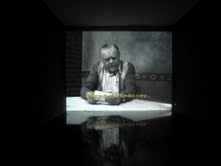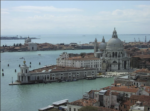Pablo Helguera – Chipilo

Mostra personale
Comunicato stampa
The Promenade Gallery, frame from Video
Gallery On The Move presents Pablo Helguera’s “Chipilo” in collaboration with The Promenade Gallery in Vlora. Chipilo is a documentary based on the story of a town of the same name, located in the vicinity of the city of Puebla, Mexico. Toward the last quarter of the XIXth century, the government of Porfirio Díaz sought to populate some areas of Mexican land with European immigrants, with the hopes that these groups would enrich the culture and the economy of the region. Amongst these groups were a community of northern italians that spoke Veneto and agreed to settle in these new lands. The unusual geographic, social and political circumstances of this arrangement resulted in the italian settlers to remain in isolation without much other choice. To this day, most of the population of Chipilo speak the original Véneto dialect. Chipilo documents, in the original language, the story of this community that resulted from a utopian social experiment in XIXth Century Mexico.
Pablo Helguera (Mexico City, 1971) is a New York based artist working with installation, sculpture, photography, drawing, socially engaged art and performance. Helguera’s work focuses in a variety of topics ranging from history, pedagogy, sociolinguistics, ethnography, memory and the absurd, in formats that are widely varied including the lecture, museum display strategies, musical performances and written fiction. He has exhibited at Performa 11 New York, Massachusetts Museum of Contemporary Art, Austin Museum of Art Texas, Centro di Cultura Contemporanea Strozzina Florence, Museum voor Hedendaagse Kunst Antwerpen, Apexart New York, Weatherspoon Art Museum Greensboro, Museum of Contemporary Art Chicago, 8. Bienal de La Habana, Karl-Ernst-Osthaus-Museum Hagen and Queens Museum of Art New York.



